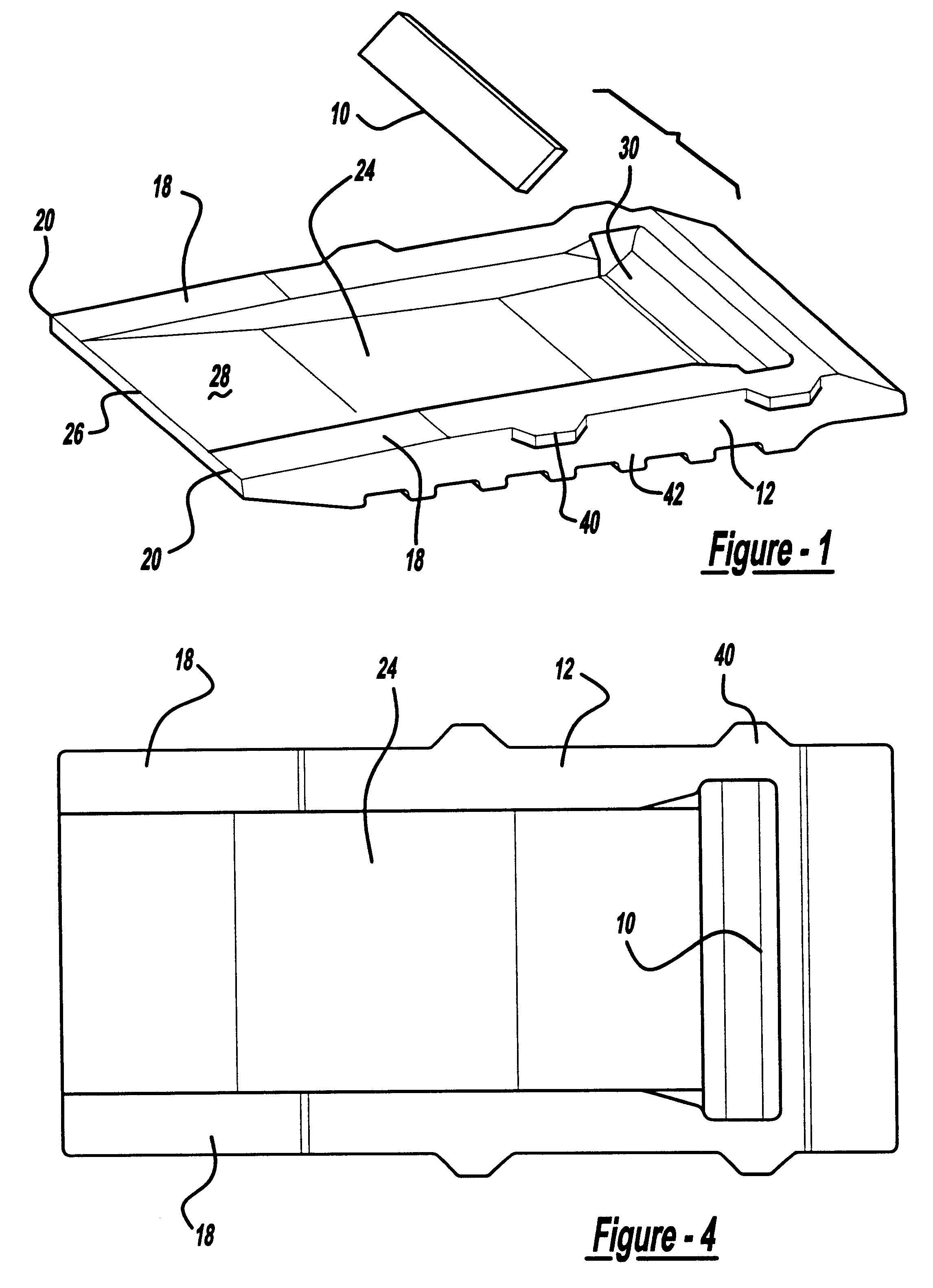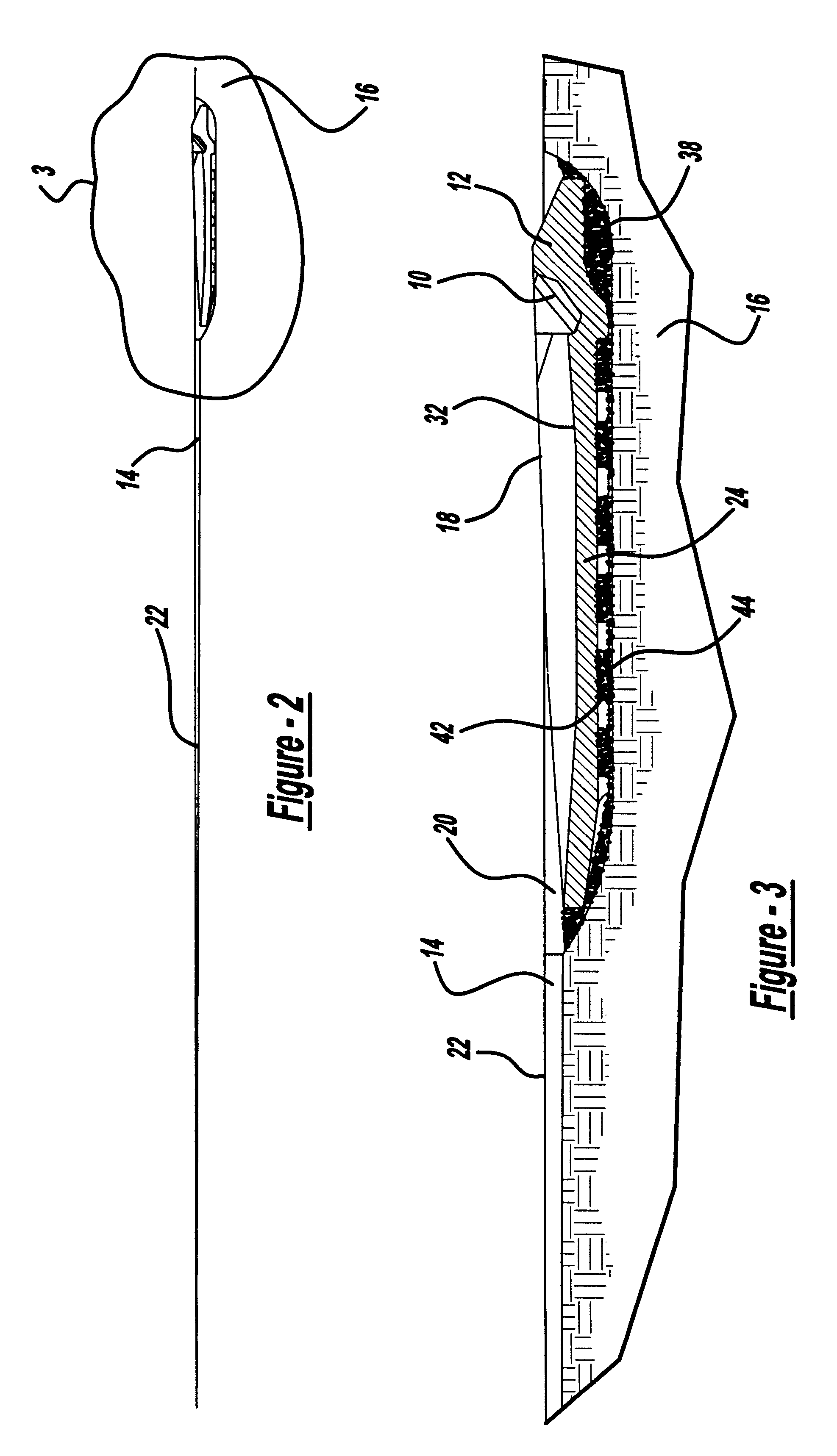Snowplowable pavement marker
- Summary
- Abstract
- Description
- Claims
- Application Information
AI Technical Summary
Benefits of technology
Problems solved by technology
Method used
Image
Examples
Embodiment Construction
The present invention has a reflector 10 mounted in a base 12 to reflect light from the headlamps of a vehicle back to the driver of the vehicle. Reflector or retroreflector as used herein can be a plastic, glass or composite material designed to reflect the light from oncoming headlamps back to the driver. Prior art metallized lens can also be used. For examples of reflectors, see Balint, U.S. Pat. No. 3,409,344 which discloses acrylic lens elements in an ABS housing. Another example of a retroreflector element is shown in Flanagan, U.S. Pat. No. 4,498,733. Various models of reflectors known to those in the art can be used such as Stimsonite Model 944 retroreflector, available in the trade or 3M model #194 of retroreflector.
As shown in FIG. 2, the present marker is designed to be placed in a groove 14 cut in the pavement 16. The groove is several times the length of the marker. The length of the groove is determined in part by the need for light to travel in the groove to impinge o...
PUM
 Login to View More
Login to View More Abstract
Description
Claims
Application Information
 Login to View More
Login to View More - R&D
- Intellectual Property
- Life Sciences
- Materials
- Tech Scout
- Unparalleled Data Quality
- Higher Quality Content
- 60% Fewer Hallucinations
Browse by: Latest US Patents, China's latest patents, Technical Efficacy Thesaurus, Application Domain, Technology Topic, Popular Technical Reports.
© 2025 PatSnap. All rights reserved.Legal|Privacy policy|Modern Slavery Act Transparency Statement|Sitemap|About US| Contact US: help@patsnap.com



